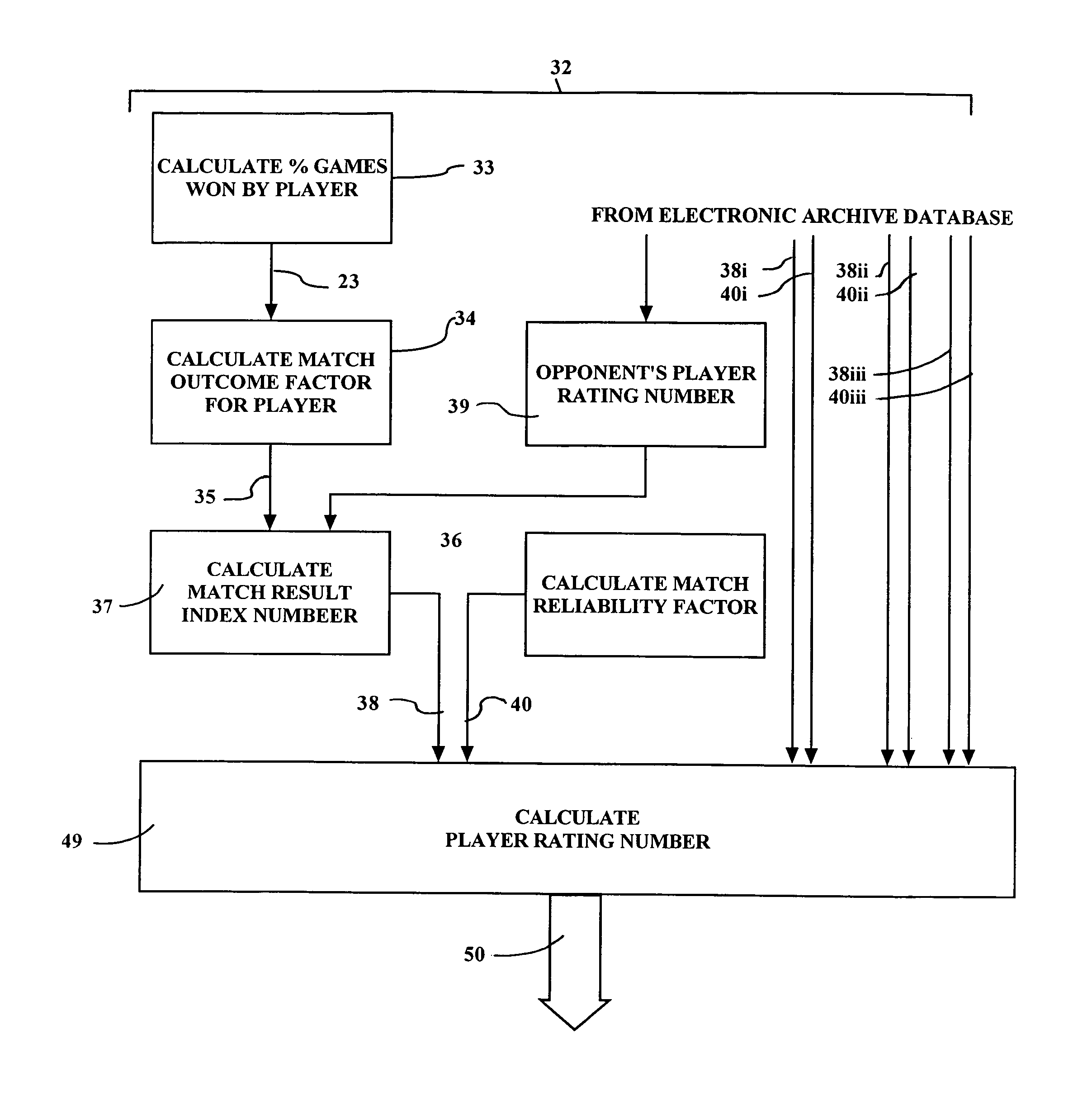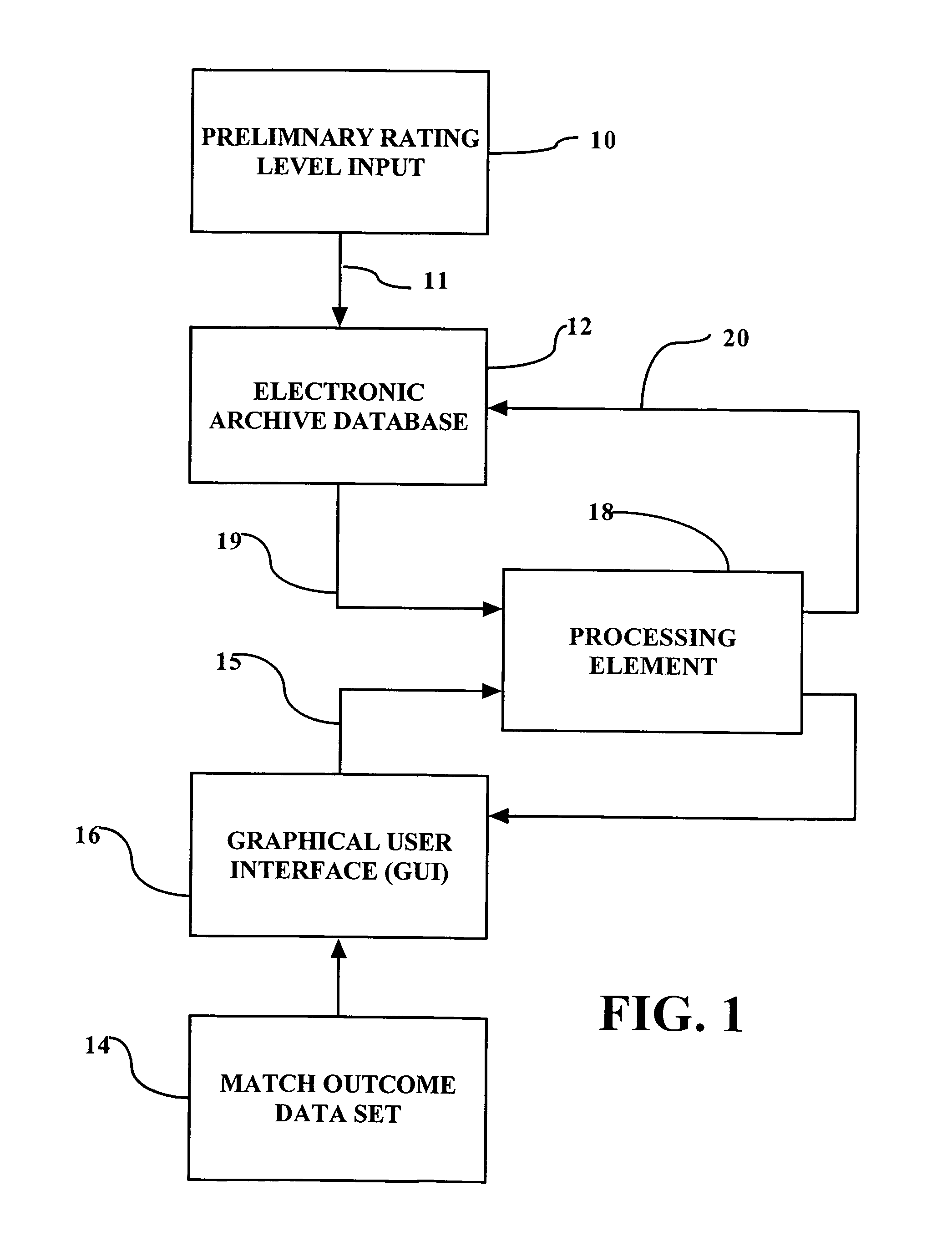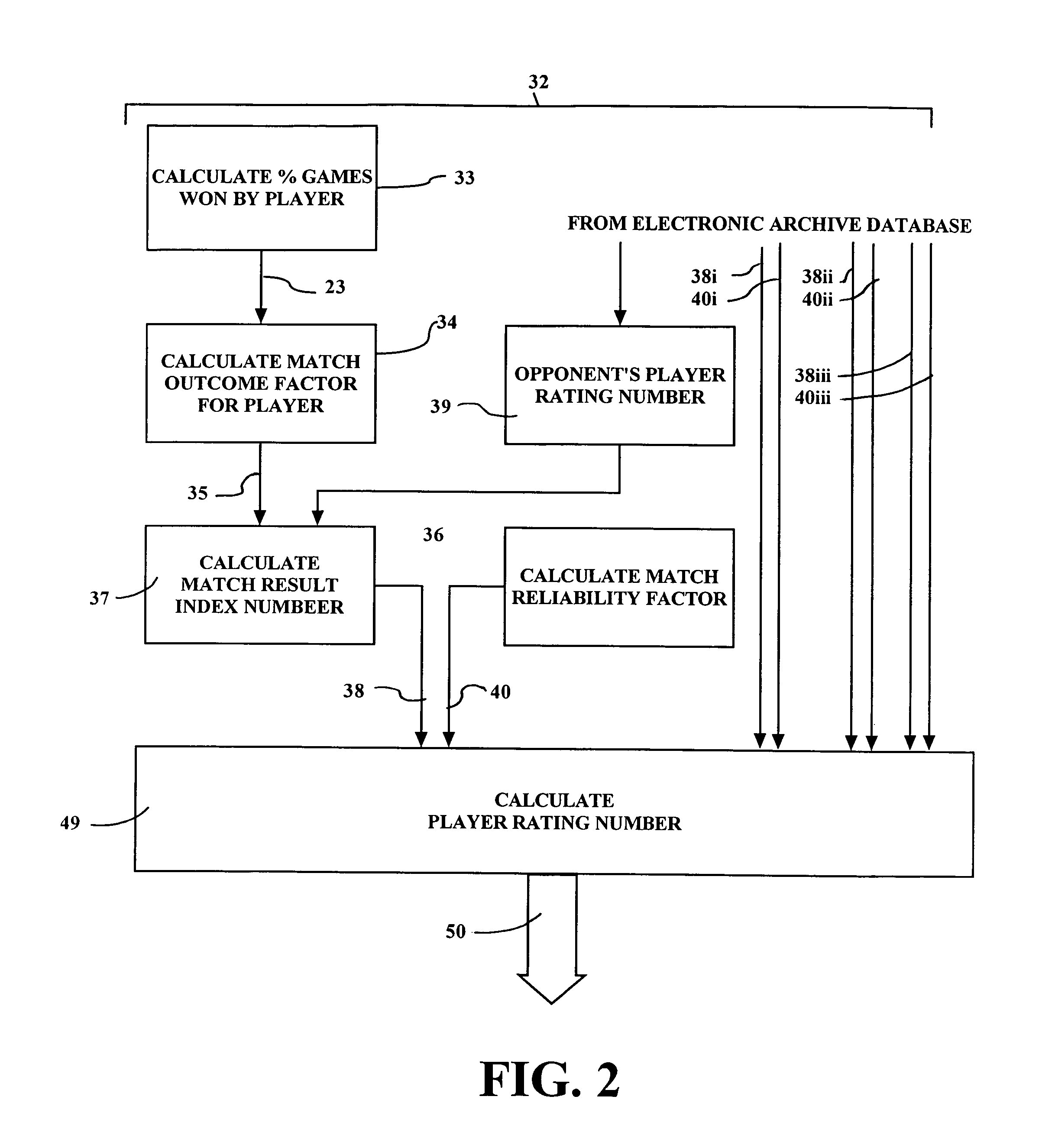A drawback of such prior rating schemes is that they do not encourage playing outside of one's own rating level, which is a well known path to improving one's game.
Such prior rating schemes also are not suited for real-time adjustments in individual players' ratings, but, instead, are better suited for making incremental end-of-season rating adjustments.
Prior rating systems of this type do not provide a wide range of levels to easily distinguish one level from another across the wide spectrum of competitive play, which, in the NTRP, for example, has caused a glut of players rated from about 2.5-5.0.
Such ratings, therefore, tend to be fairly meaningless outside of the sphere of recreational tennis leagues.
Such widespread practice of “gaming the
system” badly diminishes the effectiveness and accuracy of such prior rating systems.
Thus, similar kinds of problems arise in the proper identification of a player's true level of skill when comparisons to players in other categories are attempted:Juniors who move up to the next age category lose ranking points they have earned and have to begin all over again, often at great expense in time and money;Potential college recruits cannot readily assess how they would compare to players on a given college varsity team;High School players from one region cannot readily assess how they would compare to high school or college players in another geographic region;Outside-of-category results (such as inter-sectional match results) do not count towards one's (sectional) ranking, thereby discouraging inter-sectional play;Even so-called “blue
chip” first year college players cannot qualify for national collegiate events based on their junior rankings, because college rankings and ratings are based on college match results, alone, and such players have difficulty quickly accruing enough ranking points to qualify for such events; and,Players from different
age groups are evaluated (i.e., ranked and rated) separately and differently, thereby inhibiting meaningful comparison of players who are in different
age groups.
Those that rely on subjective criteria for assigning ranking positions are inherently flawed.
A problem with all such prior ranking systems that attempt to objectively rank players is that, aside from a consideration of the opponents' rankings, the same “weight” (i.e., importance in calculating a ranking) is given to each match-result
data set, regardless of who the match opponents are.
Thus, in prior objective ranking systems, the weight given to the match results for a match against a veteran match player would typically be the same as the weight given to the match results for a match against a newly-rated player—even though match results against newly-rated players (i.e., players whose own rating levels are of questionable accuracy) are inherently less reliable indicators of a player's
skill level than are match results against players whose rating level have been repeatedly verified.
Another problem with all such prior ranking systems is that either (1) the same “weight” (i.e., importance in calculating a ranking) is given to each match-result
data set regardless of the match format (e.g., two out-of-three sets, three-out-of-five sets, pro set, etc.), or (2) only those matches that are contested using the same match format are considered in calculating rankings.
Generally speaking, prior systems that are used to calculate rankings are not suitable for calculating ratings; and, prior systems that are used to calculate ratings are generally not suitable for calculating rankings.
Thus, they are not useful for determining composite rankings of individual players who are at different rating levels.
Another problem associated with prior methods of rating / ranking players across a
broad spectrum of playing levels relates to the disparate ways that amateurs and professional rankings are typically calculated.
It is inherently problematic to transfer player ratings or rankings from one such prior
system to another as a player moves from one category to another, such as from amateur high school player to collegiate player to professional player to amateur senior player.
One problem with this prior method of calculating rankings relates to the fact that the rankings are not directly based on “whom” one beats (or loses to), but are, instead, based on “when” (i.e., in what round) and “where” (i.e., in what tournament) the win (or loss) occurs.
Thus, as will be appreciated by those skilled in the art, this prior
system is not suitable for ranking, in a single
list, a wide spectrum of players,
ranging from amateur players, to new professional players, to seasoned veteran professionals.
Although this type of prior ranking system does, in some instances, award the scheduling of play against highly ranked competition, it inherently penalizes (i.e., attributes a lower ranking to) very good players who, for one reason or another, do not have an opportunity to play against more highly ranked players.
Another problem with both the ATP and the ITA ranking schemes is that, in calculating a player's ranking, neither scheme considers the how badly, or how closely, a player beats his / her opponent; but, instead, only considers whether he / she won or lost the match.
 Login to View More
Login to View More  Login to View More
Login to View More 


